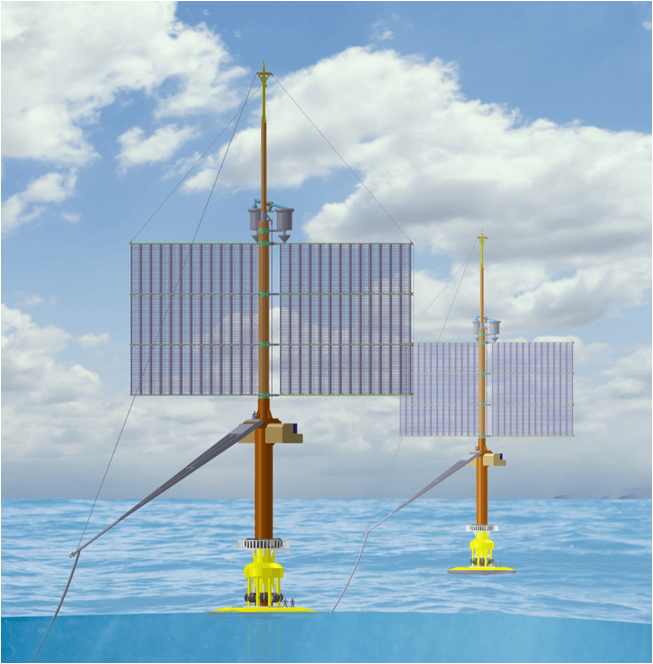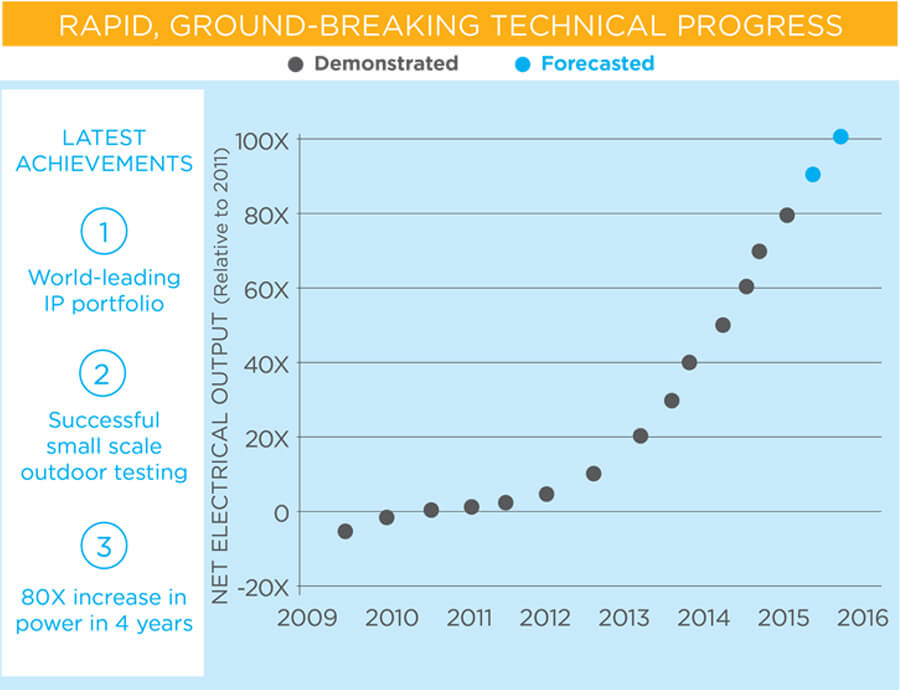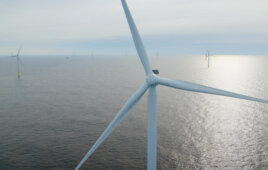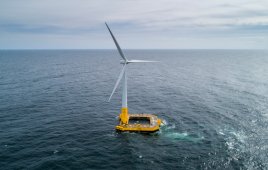
Accio Energy’s EHD wind energy system generates electricity using wind and charged water mist. The wind separates positive and negative charges as it moves the mist, creating high-voltage, direct current electricity.
Although the company name is based on magic (named after the summoning spell in the Harry Potter series), Accio Energy’s wind-power technology is rooted in science. The science of lightning.
The basic elements used to create lightning are wind, water droplets, and charge separation. Accio’s electrohydrodynamic (EHD) wind-energy generation system uses all three, albeit producing much less power than an actual thunderstorm: wind separates positive and negative charges as it moves charged water droplets away from the source panel. The continuous separation of charges creates a flow of electrons as high-voltage, direct current electricity.
According to the company, the concept of using charged water droplets to harness wind energy dates to the late 1960’s. Researchers at the time had the theoretical physics down, but were unable to demonstrate a net energy positive system. Much like a good magic spell, precision is important. The key to EHD wind energy is precisely controlling the complex electric fields that form between charged droplets, the droplet source, and the ground. Failure to do so prevents the generator from creating electricity.
It took a couple of years to viably produce net positive energy, and another couple to increase efficiency, but Accio Energy maintains it is the first company to have identified how to control electric fields and produce commercially attractive power. The result? A first-of-its-kind generator with no blades or moving parts, but instead wind-permeable flat panels (that from a distance resemble solar panels).
The panels, composed of mass-produced tubes with tiny holes (where water droplets are released), can combine into several arrays to scale kilowatts of generated power or gigawatts. Because the number of water droplets and charge on the droplets can adjust instantaneously based on weather conditions, the company says its wind system can operate at peak efficiency in all wind speeds.
EHD generators offer several advantages over conventional wind turbines. Without moving parts, they are bird, bat, and radar friendly. The technology is also scalable and easy to transport. Composed of common materials, Accio Energy says a single wind panel that’s the height and length of a standard shipping container could produce 2.5 to 3 kW of rated power as part of a utility-scale array.

Accio Energy says its wind-energy generation systems have up to a 40% higher capacity factor than wind turbines.
The company estimates a single manufacturing facility (the size of an automotive assembly plant) could produce at least 4,000 panels each day, resulting in 10 to 12 MW of wind-generated capacity. This is equivalent to delivering four 3-MW wind turbines every day of the year from a single plant.
What makes EHD generators even more magical is their potential in the offshore wind market. Because of the modular design and a higher capacity factor (Accio pegs the factor 40% higher than conventional turbines), it estimates that EHD systems can eliminate up to 50% of the costs of offshore wind farms. Through such savings, Accio says EHD wind-generated energy could achieve unsubsidized cost parity with U.S. coal and natural gas plants.
The U.S. Department of Energy has taken notice. In late 2015, the DOE’s Advanced Research Projects Agency-Energy awarded $4.5 million in funding to support Accio Energy’s work in developing utility-scale EHD wind-power generation systems, specifically for the offshore market. The Accio team is currently partnering with the University of Maine’s Advanced Structures and Composites Center to design, build, and test prototypes at a demonstration site off the Atlantic Coast.
According to Accio Energy, EHD systems will: “operate on seawater; be built using high-volume, low-cost automotive heritage advanced manufacturing; offer deep-water deployment options and radar compatibility; and be sufficiently robust to survive expected storm conditions.” With a little magic, the U.S. might soon have another good reason to develop offshore wind power.
Filed Under: Offshore wind, Turbines





Hi.
IT is now 2020. Is Accio still in business? Any progress? Commersial yet? Very curious.
Yes! I get so excited when the new generation of thinkers focus on what is abundant, recyclable, non-polluting, non-invasive. There is so much potential for invention when chemists, physicists, and engineers cross discipline and trigger their creativity!
I am proud to be part of a government that supports such efforts.